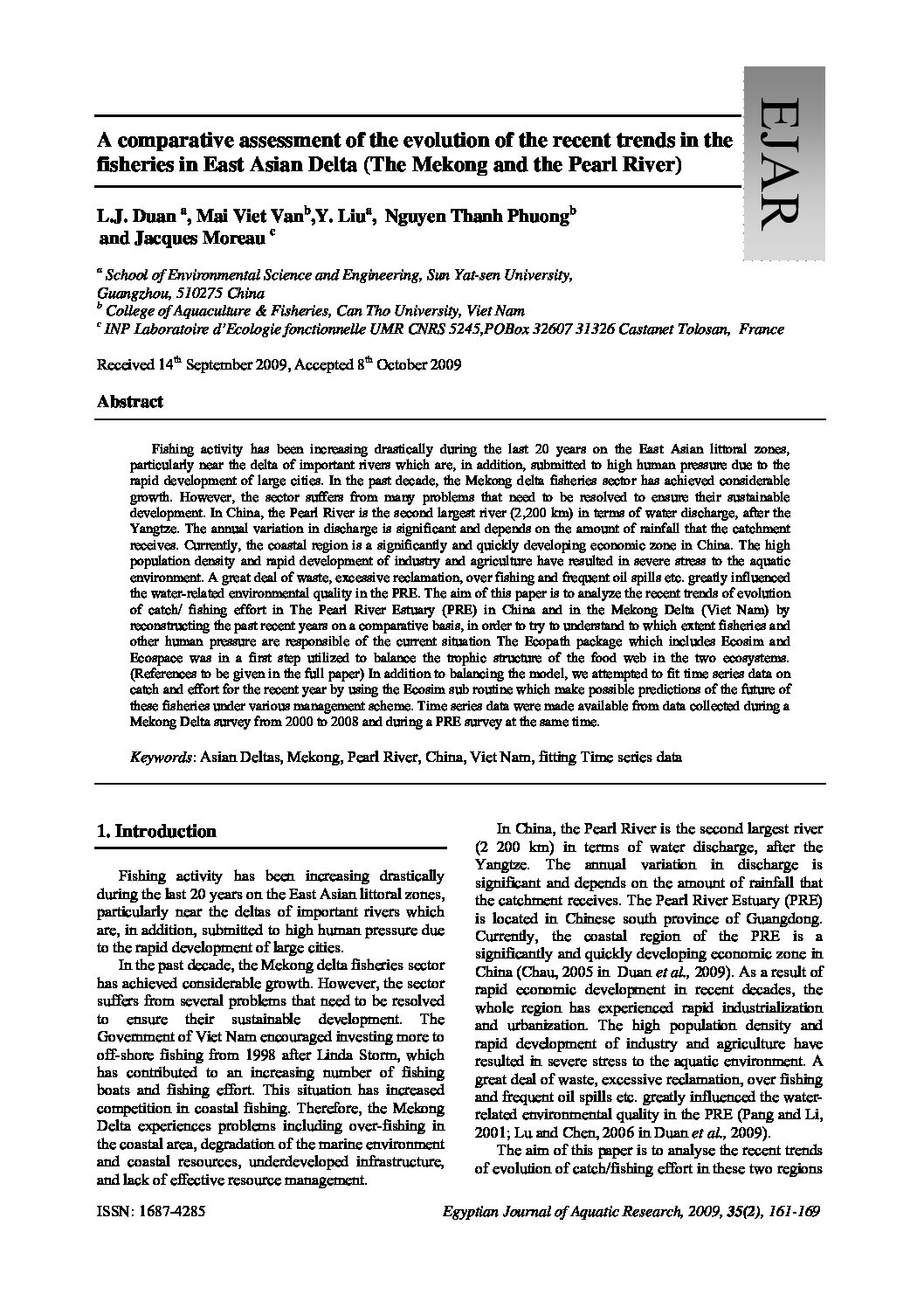Categories
vol-35Application of mathematical modeling in the study of sea water
intrusion in the coastal quaternary aquifer, Delta Wadi El Arish,
Egypt
Mohamed I. M. Gad, Abdel Fattah E. A. El Sheikh and
Magdy M. S. El Maghraby*
Hydrology Dept. Desert Research Center
*Geology Dept., Fac. of Science, Alexandria Univ.
E-mail: [email protected]
Received 15th July 2009, Accepted 16th August 2009
Abstract
In recent years, the risk of Sea Water Intrusion (SWI) is continuously threatening coastal parts of the Quaternary
Aquifer in Delta Wadi El-Arish (QADWA), where the agricultural activity entirely depends on rainfall and
groundwater. Field research was carried out during October 2006 and October 2008. Twenty one water samples were
collected for routine chemical analysis and water level monitoring were carried out and interpreted. These field
measurements were compared with those collected from the previous studies to delineate SWI phenomenon. QADWA
capacity was determined via carrying out three long duration pumping tests. The recharge rate from local rainfall was
estimated through carrying out three infiltration tests and applying Infiltration-Rainfall method. Two numerical models
were applied (MODFLOW and SINM codes). The two-dimensional finite difference simulation algorithm
(MODFLOW) was formulated in order to perform a steady-state calibration for the physical parameters, and boundary
conditions of the hydrodynamic system. In addition, the interface toe positions and its temporal migration under
different testing scenarios had been accomplished by applying two-dimensional finite element simulation algorithm
(SINM) depending on the calibrated outputs of the MODFLOW code. Simulation results indicated that the proposed
scheme successfully simulated the intrusion mechanism. The results showed that the seawater/freshwater interface will
migrate, after 15 years, 5.5 Km landward from its initial position if the present groundwater production policy (19
million m3
/yr) continued operating in the area. The predicted interface toe positions will migrate 13 Km from its initial
position after 15 years in case of increasing the groundwater production by 4%. While the climatic change will cause its
migration by 5.3 Km landward from its initial position assuming a rise of sea water level by 0.5m. To mitigate its
migration, subsurface flow toward sea of 144443 m3
/day is needed. It is recommended to perform monthly or bi-monthly
groundwater level and salinity measurements for better model calibration and verification. The policy opts for increasing
groundwater pumping in the southern part of QADWA and to avoid any pumping in the north close to the Mediterranean
Sea is highly recommended. Testing extraction barrier to identify the best operation strategy for SWI domesticity is also
recommended.
Keywords: Hydrogeology, Coastal aquifers, Sea water intrusion, Numerical simulation, MODFLOW model,
Delta Wadi El-Arish, Egypt.







